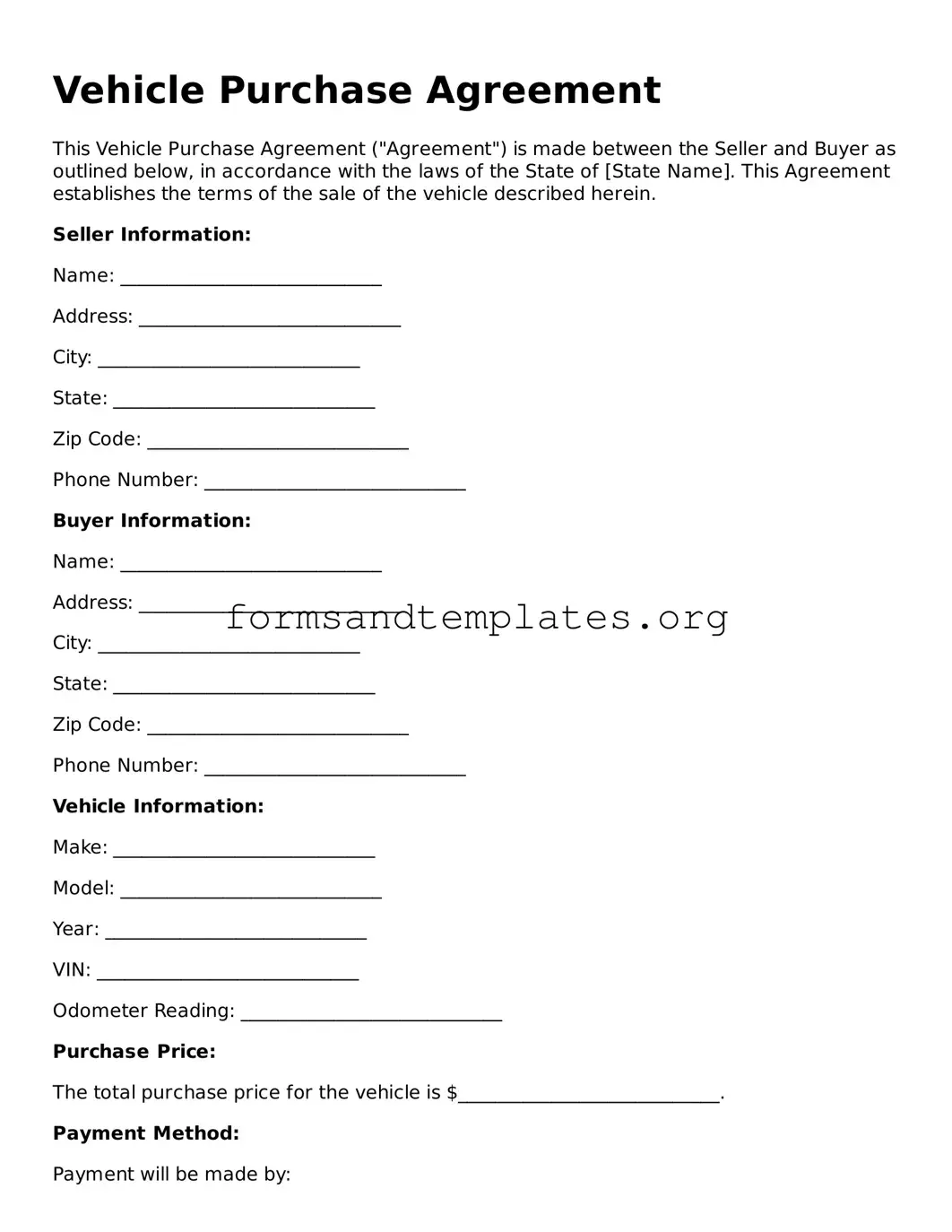Vehicle Purchase Agreement
This Vehicle Purchase Agreement ("Agreement") is made between the Seller and Buyer as outlined below, in accordance with the laws of the State of [State Name]. This Agreement establishes the terms of the sale of the vehicle described herein.
Seller Information:
Name: ____________________________
Address: ____________________________
City: ____________________________
State: ____________________________
Zip Code: ____________________________
Phone Number: ____________________________
Buyer Information:
Name: ____________________________
Address: ____________________________
City: ____________________________
State: ____________________________
Zip Code: ____________________________
Phone Number: ____________________________
Vehicle Information:
Make: ____________________________
Model: ____________________________
Year: ____________________________
VIN: ____________________________
Odometer Reading: ____________________________
Purchase Price:
The total purchase price for the vehicle is $____________________________.
Payment Method:
Payment will be made by:
- Cash
- Cashier's Check
- Bank Transfer
- Other: ____________________________
Terms and Conditions:
- The Seller agrees to sell the vehicle described above to the Buyer for the purchase price stated.
- The Buyer acknowledges the current condition of the vehicle and accepts it "as is".
- Upon payment in full, the Seller will transfer the title of the vehicle to the Buyer.
- Both parties agree to date and sign this Agreement to make it binding.
Signatures:
Seller Signature: ____________________________ Date: ____________________________
Buyer Signature: ____________________________ Date: ____________________________
This Agreement is executed as of the _____ day of ____________, 20__.
